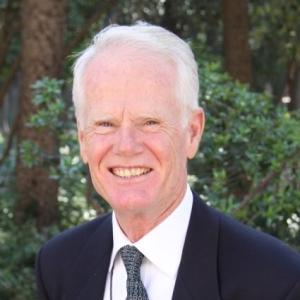Carlos F. Daganzo
416A McLaughlin Hall

Carlos F. Daganzo is a Chancellor’s Professor of the Graduate School in Civil and Environmental Engineering at UC Berkeley. Daganzo’s research focuses on econometrics, logistics freight operations, and network theory, among other disciplines, with an aim to improve mobility through technology. He has authored five internationally used and translated books, with his latest public transit publication describing the blueprint for Barcelona’s new high-performance bus system, invented by and co-designed by Daganzo. In 2018, Daganzo was appointed Overseas High Talent Strategic Scientist to the city of Beijing, and the following year, he was recognized as “the most remarkable author” in the 50-year history of the prestigious Transportation Research journal series. He is also a member of several professional organizations, including the National Academy of Engineering, Via Analytics (co-founder & chairperson), and the International Symposium on Transportation and Traffic Theory (ISTTT).
Ph.D., Civil Engineering (Transportation), University of Michigan, 1975
M.S.C.E., Civil Engineering (Transportation), University of Michigan, 1973
B.S., Civil Engineering, University of Madrid, Spain, 1972
Daganzo’s research focuses on answering big-picture transportation questions that require abstract thinking and cannot be answered by simply extrapolating observations from the real world. Some of the research questions he aims to address in his research include: Why is it that transportation systems cannot seem to be able to serve megacities well? Why are many bus systems so unreliable and disorganized? His current research projects include increasing the capacity of isolated intersections, preventing bus bunching in high-frequency areas, and using perimeter control to help improve mobility in cities. Here are a few of the projects Daganzo is currently working on below:
- Increasing intersection capacity - Traffic signals with different green sub-phases for through and left-turning vehicles are inefficient because the setup prevents some of the lanes from discharging during part of the green time. Daganzo’s research findings propose using a mid-block pre-signal to direct cars to two distinct but overlapping sets of lanes so that one or more lanes are shared by left and through vehicles.
- Preventing buses from coming in bunches - Experience shows that buses on high-frequency lines often arrive at stops irregularly, sometimes in bunches. Bunching is undesirable for passengers because it increases waiting time at bus stops. Daganzo’s research proposes a decentralized strategy where each bus responds not just to the distance separating from the bus it follows but also to the distance from the bus behind, much as if the buses were connected by springs, which is effective even if the disruptions are major. This spring method automatically evens out distance and time separations between buses despite large disturbances such as snowstorms, bus breakdowns, and bus insertions.
- Using perimeter control to improve mobility in cities - When demand conditions are steady, traffic flow streams on long homogeneous roads exhibit reproducible relations between their average flows and densities that engineers call “fundamental diagrams.” Daganzo’s research proposal suggests that entire city neighborhoods must also exhibit similar macroscopic fundamental diagrams (MFD) connecting the total number of cars on the road at any given time (the accumulation) with the rate at which trips reach their destinations (the output). As part of his research findings, the MFD of neighborhoods that are not too big should be independent of where people are going (the neighborhood's “origin-destination table”); i.e., the MFD should be a property only of the network infrastructure.
News
| Title | Publication Date |
|---|---|
| Remembering Professor Emeritus Carl L. Monismith: Paving a Legacy of Learning and Kindness |
Spotlights
No mentions in Spotlights
Student Updates
No mentions in Student Updates


